Optimize Your Content Marketing Strategy with Competitive Market Data

Your browser is out of date. The site might not be displayed correctly. Please update your browser.

To create a content strategy that truly drives results, you must understand what resonates with your audience, stay informed on your competitors’ strategies, and effectively distribute your content within your unique market.
Semrush .Trends provides the market and competitive insights you need to create the right content, optimize its reach, and maximize your marketing ROI.
Ready to create content that addresses your audience and your bottom line?
This step-by-step use case will walk you through Semrush .Trends tools—including One2Target, Market Explorer, Traffic Analytics, and EyeOn—to refine your audience targeting, uncover new content opportunities, and strengthen your content distribution strategy.
Start your research with One2Target. Here, you can uncover competitor audience demographics and behaviors to refine your target audience.
You may already know your target audience, but analyzing competitor audiences can reveal untapped segments and opportunities. By identifying these potential gaps, you can expand your reach and strengthen your content strategy to drive better results.
For example, One2Target's Demographics and Socioeconomics reports reveal that among competitors, females aged 25-34 who live in mid-sized, lower-income households are the largest segment.
Other key segments to consider targeting include those already engaged by competitors. For instance, Expedia.com captures a significant segment of 18-24-year-olds and a higher-than-average male audience.
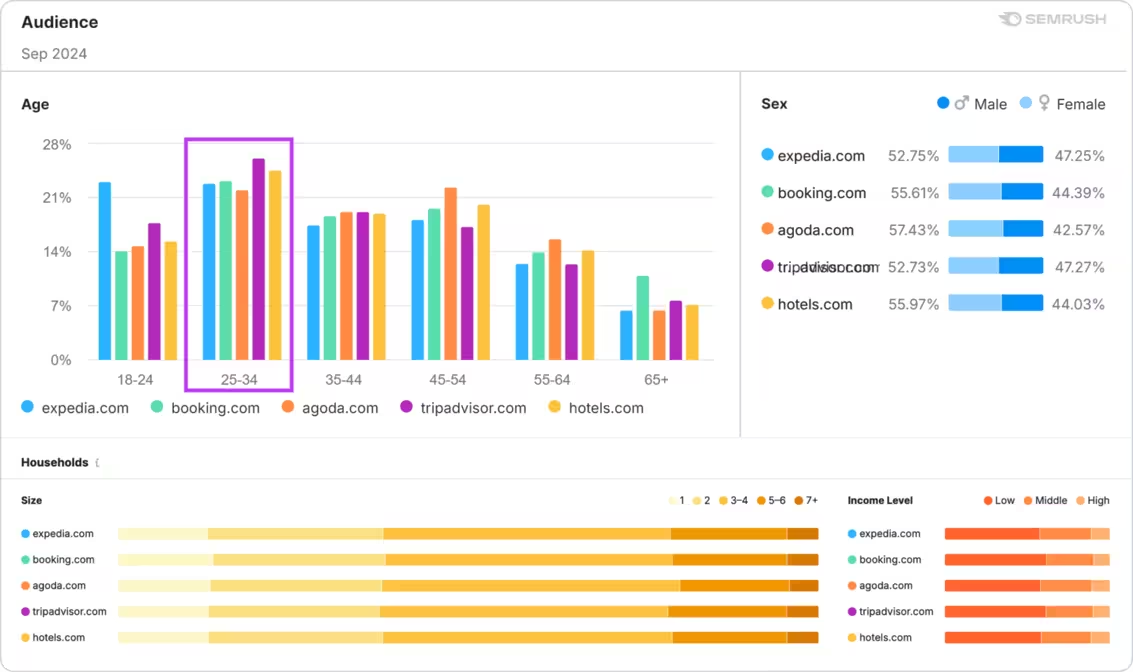
Building a strategy to reach this demographic could help tap into an audience already proven to be highly engaged by similar brands. Either way, ensure your current and future content speaks to these demographics.
The Behavior report reveals popular social media platforms that can guide your content strategy. According to this chart, you’ll have to publish more YouTube videos.
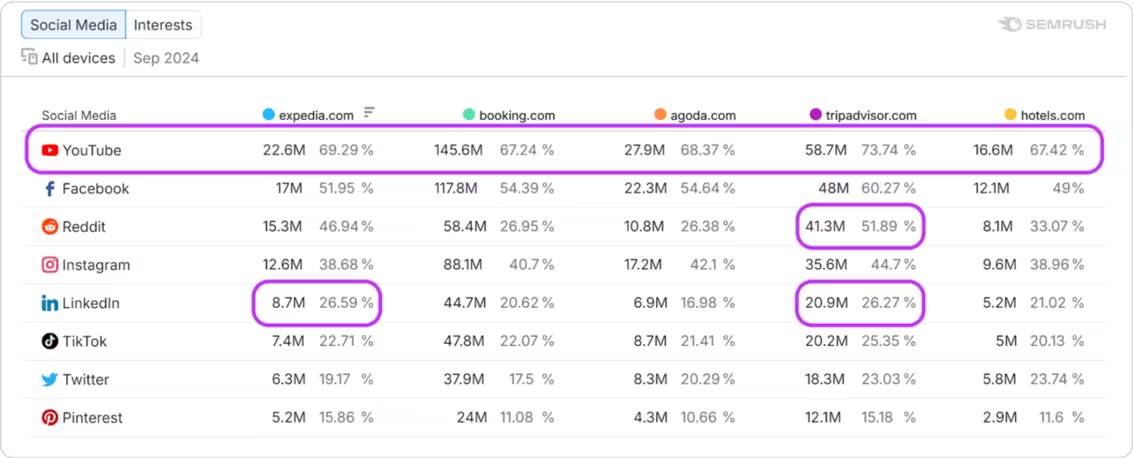
Identify outliers among platforms popular with specific audiences. For example, 52% of tripadvisor.com’s audience visits Reddit, while 27% of expedia.com’s audience and 26% of tripadvisor.com’s audience visited LinkedIn. These insights can reveal unique promotion opportunities on less popular, but still impactful platforms.
Now that you’ve refined your target audience, let’s determine when to publish relevant content to this group.
First, set up competitor monitoring with EyeOn. With this tool, you’re able to track your rivals and uncover trends in their content, promo, and social media strategies.
Peek at your competitors’ recent Google Search Ads, blog posts, landing pages, and social media activities. Use the intel on the frequency of these content launches and adapt your content strategy accordingly.

Then, match this data with the Trend by Competitor chart in Traffic Analytics. Select “Daily” to view day-by-day traffic to each of your competitors.

Do the dates of the high-traffic peaks correspond with the content launches you saw in EyeOn? By partnering insights in EyeOn and Traffic Analytics, you can determine which content marketing campaigns drove the most traffic.
You can go one step further using the Traffic Trend by Type graph. Select the channels you’d like to view, and check the traffic trend.

For example, if you noticed in EyeOn that a competitor was running a social media campaign promoting a new product line or offer on their website, you could select social channels on the right-hand side of the Traffic Trend by Type graph and compare which posts on which days drove the most traffic.
You have the “who” from Step 1 and the “when” from Step 2. Now, let’s get intel on the “where.”
Explore the Market Geo Distribution chart in Market Explorer to understand where traffic within your market comes from. This data can help direct your content localization efforts, allowing you to tailor your messaging and topics for greater regional relevance.
Select the “Top Changes” tab to explore the countries seeing the most traffic growth in your market.

For example, the countries listed under the “Top changes” tab indicate a need for content that speaks to an Asian audience, especially those in Malaysia and South Korea.
Another “where” to uncover for better content marketing is where your audience spends time online.
With the Audience Overlap report in One2Target, select two or more competitors to see which websites their shared audience regularly visits. This chart reveals that this audience visits airline, real estate, and credit card sites.
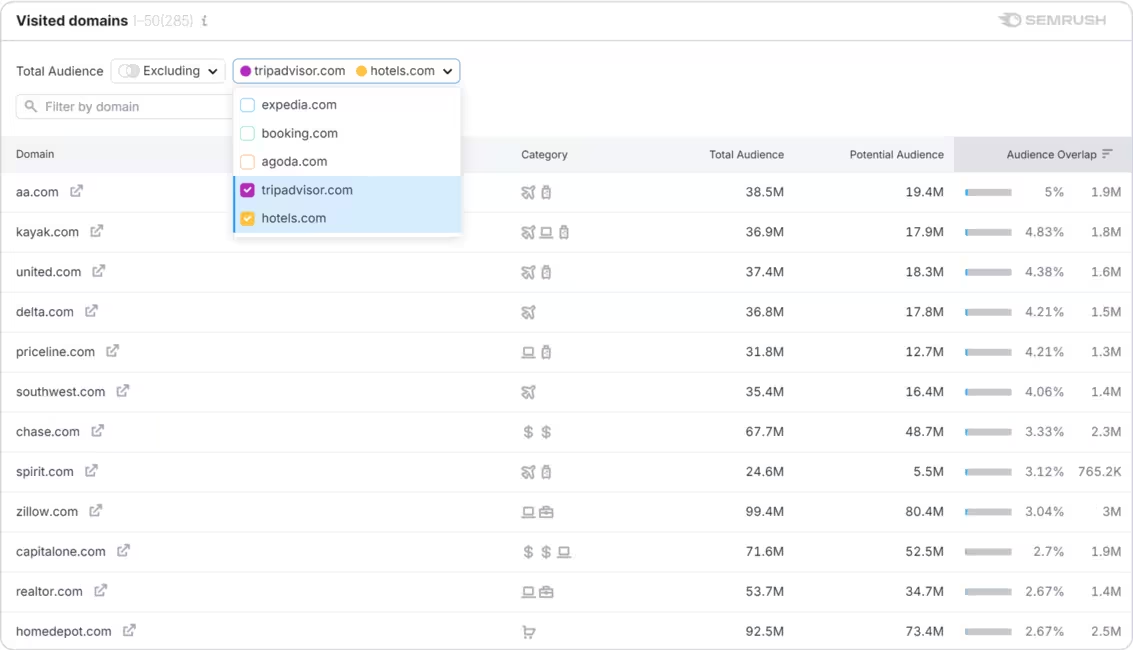
These adjacent sites could provide good partnership or ad placement opportunities. And If you haven’t created teardown pages on those competitors, it’s time to add the creation of competitive teardowns to your content marketing to-do list.
Traffic Analytics provides even more data on the websites your audience frequents. The Traffic Journey report focuses on where users navigate to and from competitor sites.
Understanding these pathways can help you identify potential lead magnets, partnership opportunities, or platforms for content distribution.
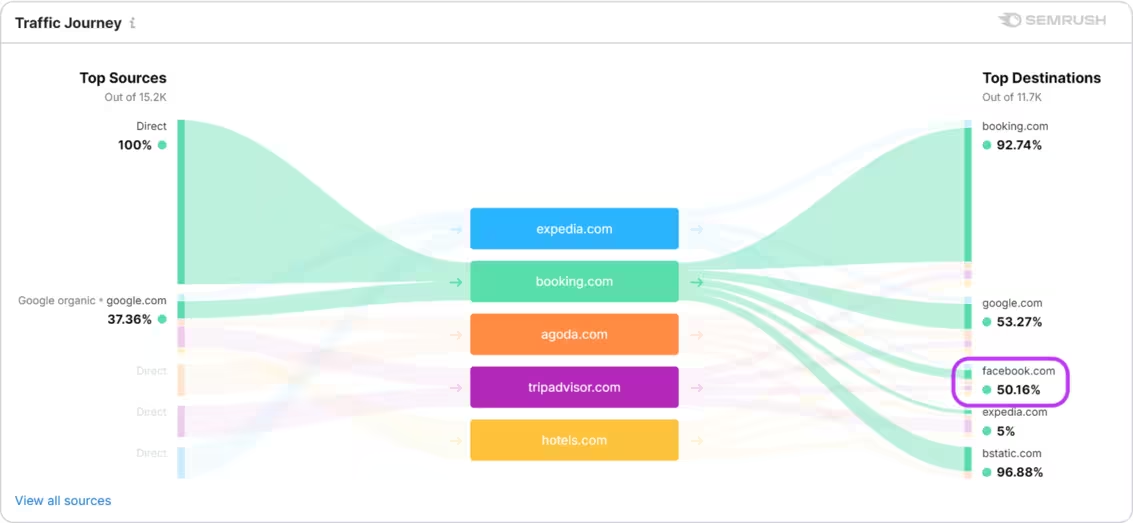
In this example, many users leave a competitor’s site for Facebook. Consider building a Facebook ad lead magnet to target that competitor. Or use the lead magnet to retarget people who have left your website. (Or use the lead magnet for both campaigns!)
Let’s finalize our research with Market Explorer. Here, we’ll determine the best channels to deliver our spot-on content.
In the Benchmarking tab, see how competitors fare across key traffic channels. See how each competitor (and the overall market) fare on any traffic channel.
Looks like these five competitors make up over half of the market’s traffic via organic search. It's worth checking out what each of them does to attract organic traffic.

Review the Traffic Distribution chart to understand how your competition acquires traffic. Use this intel to inform your content promotion strategy.
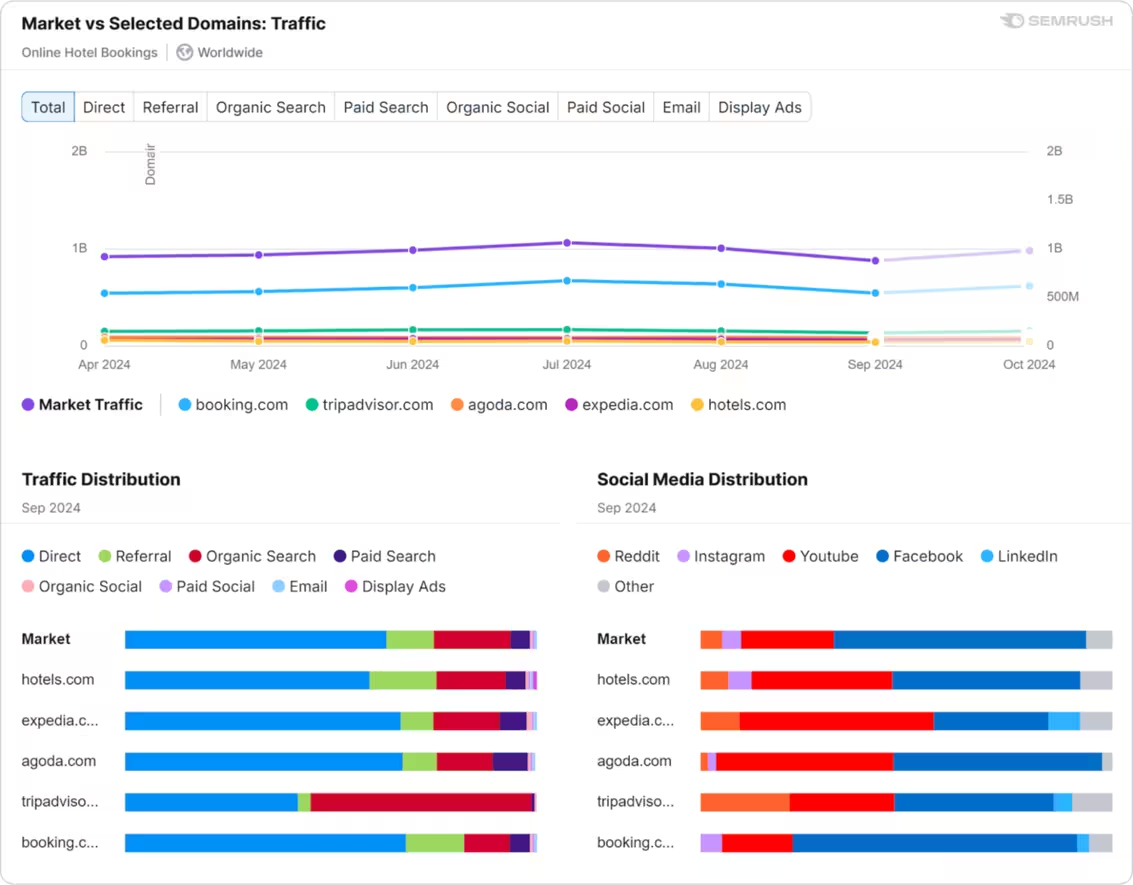
In this chart, most of the competition gets the second-highest traffic from organic search. This information complements the Benchmarking traffic chart we first looked at in Step 4.
Take these data-based insights to increase high-quality SEO content on your website.
Using a combination of Market Explorer, Traffic Analytics, One2Target, and EyeOn, .Trends gives marketers everything they need to make smart content marketing decisions.
Create high-performing content and drive growth using data-driven insights from Semrush .Trends. Follow these steps to build a successful content marketing strategy:
Using .Trends to guide content creation and promotion maximizes impact, keeps you competitive, and drives sustainable growth.